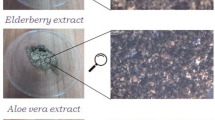Abstract
In the past years the textile industry has witnessed new advances in the area of textile fiber chains engineering, which allow the modification of the structure of such chains so as to produce polymers responsive to changes in the environment, thus capable of attaching to cells and bioactive molecules. On the other hand, following our society’s trend towards higher hygiene standards, the research and development of antimicrobial textiles has shown a remarkable increase. Applications of such textiles can nowadays be found in underwear, sportswear, home furnishing, protective clothing, wound-dressings and in microbial infection high risk settings, such as health care institutions. The present research aims at the development of a strong, durable and washable antimicrobial L-Cysteine (L-Cys)-functionalized cotton by means of a covalent mechanism. The covalent binding of L-Cys onto cellulosic fibers was assessed by Scanning Electron Microscopy-Energy Dispersive X-ray Spectroscopy (SEM-EDS) and Fourier Transform Infrared Spectroscopy (FTIR) analysis. Antimicrobial assays showed that the functionalized cotton yielded strong microbial killing rates, exhibiting inhibition ratios of 89 and 83% against K. pneumoniae and S. aureus, respectively. These results demonstrate the effectiveness of the covalent modification of cotton fabrics with L-Cys adding antimicrobial properties to cotton fibers and thus open the door to a world of applications in the area of increased risk microbial infections.
Similar content being viewed by others
Refrerences
Fischbach, L. A., K. J. Goodman, M. Feldman, and C. Aragaki (2002) Sources of variation of Helicobacter pylori treatment success in adults worldwide: A meta-analysis. Internat. J. Epidemiol. 31: 128–139.
Gao, Y. and R. Cranston (2008) Recent advances in antimicrobial treatments of textiles. Text. Res. J. 78: 68–72.
Kramer, A., P. Guggenbichler, P. Heldt, M. Junger, A. Ladwig, and H. Thierbach (2006) Hygienic relevance and risk assessment of antimicrobial-impregnated textiles. Curr. Prob. Dermatol. 33: 78–109.
Son, Y., S. Kim, K. Ravikumara, and S. G. Lee (2006) Imparting durable antimicrobial properties to cotton fabrics using quaternary ammonium salts through 4-aminobenzenesulfonic acid-chloro-triazine adduct. Eur. Polymer J. 42: 3059–3067.
Sun, Y. Z. C. and M. Braun (2005) Preparation and physical and antimicrobial properties of a cellulose-supported chloromelamine derivative. Ind. Eng. Chem. Res. 44: 7916–7920.
Luis Cabrales, N. A., A. Hammond, and A. Hamood (2012) Cotton fabric functionalization with cyclodextrins. J. Mater. Environ. Sci. 3: 561–574.
Khaled, F. El-tahlawy MAE-b, A. G. Elhendawy, and S. M. Hudson (2005) The antimicrobial activity of cotton fabrics treated with different crosslinking agents and chitosan. Carbohyd. Polym. 60: 421–430.
Chun, D. T. W. and G. R. Gamble (2007) Using the reactive dye method to covalently attach antibacterial compounds to cotton. J. Cotton Sci. 11: 154–158.
Gashti, M. P., J. Willoughby, and P. Agrawal (2011) Surface and bulk odification of synthetic textiles to improve dyeability. In: {roProf.} Peter Hauser (ed.). Textile Dyeing. ISBN: 978-953-307-565-5, InTech, DOI: 10.5772/18706.
Caldeira, E., E. Piskin, L. Granadeiro, F. Silva, and I. C. Gouveia (2013) Biofunctionalization of cellulosic fibres with l-cysteine: Assessment of antibacterial properties and mechanism of action against Staphylococcus aureus and Klebsiella pneumoniae. J. Biotechnol. 168: 426–435.
Isabel, C. G., D. Sa, and M. Henriques (2012) Functionalization of Wool with L-Cysteine: Process characterization and assessment of antimicrobial activity and cytotoxicity. J. Appl. Polymer Sci. 124: 1352–1358.
Ratner, B. (2004) Biomaterials Science An Introduction to Materials in Medicine. 2nd ed., Elsevier Academic Press, London, UK.
Vigo, T. (2001) Antimicrobial polymers and fibers: Retrospective and prospective. Bioactive fibers and polymers. Am. Chem. Soc. 11: 175–200.
Selvam, S. and M. Sundrarajam (2012) Functionalization of cotton fabric with PVP/ZnO nanoparticles for improved reactive dyeability and antibacterial activity. Carbohyd. Poly. 2: 1419–1424.
Socrates, G. (2004) Infrared and Raman Characteristic Group Frequencies: Tables and Charts. John Wiley & Sons, UK.
Morris, S. L., R. C. Walsh, and J. N. Hansen (1984) Identification and characterization of some bacterial membrane sulfhydryl groups which are targets of bacteriostatic and antibiotic action. J. Biol. Chem. 259: 13590–13594.
Greg, T. (2008) Hermanson. Bioconjugate Techniques. 2nd ed., Academic Press Inc.
Kim, Y. H., C. W. Nam, J. W. Choi, and J. H. Jang (2003) Durable antimicrobial treatment of cotton fabrics using N-(2-hydroxy)propyl-3-trimethylammonium chitosan chloride and polycarboxylic acids. J. Appl. Polymer Sci. 88: 1567–1572.
Cottell, A., S. P. Denyer, G. W. Hanlon, D. Ochs, and J. Y. Maillard (2009) Triclosan-tolerant bacteria: Changes in susceptibility to antibiotics. J. Hosp. Infection. 72: 71–76.
Martins, M. C. L., S. A. Curtin, S. C. Freitas, P. Salgueiro, B. D. Ratner, and M. A. Barbosa (2009) Molecularly designed surfaces for blood deheparinization using an immobilized heparin-binding peptide. J. Biomed. Mat. Res. Part A. 88: 162–173.
Author information
Authors and Affiliations
Corresponding author
Rights and permissions
About this article
Cite this article
Nogueira, F., Vaz, J., Mouro, C. et al. Covalent modification of cellulosic-based textiles: A new strategy to obtain antimicrobial properties. Biotechnol Bioproc E 19, 526–533 (2014). https://doi.org/10.1007/s12257-013-0498-7
Received:
Revised:
Accepted:
Published:
Issue Date:
DOI: https://doi.org/10.1007/s12257-013-0498-7




